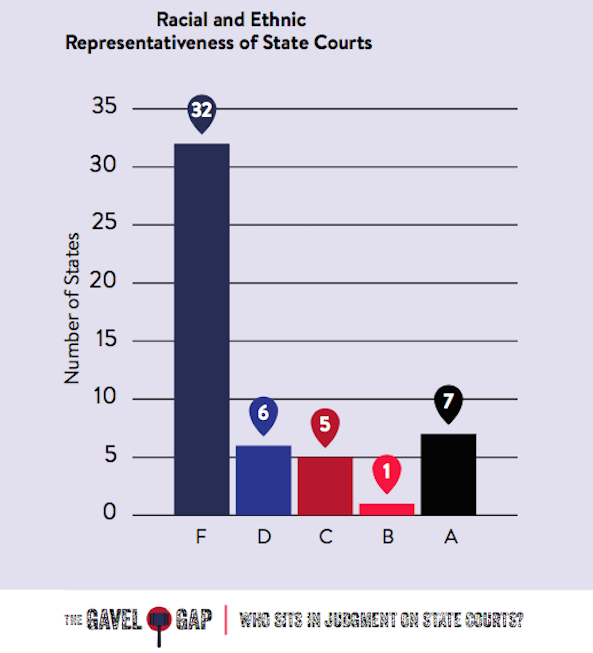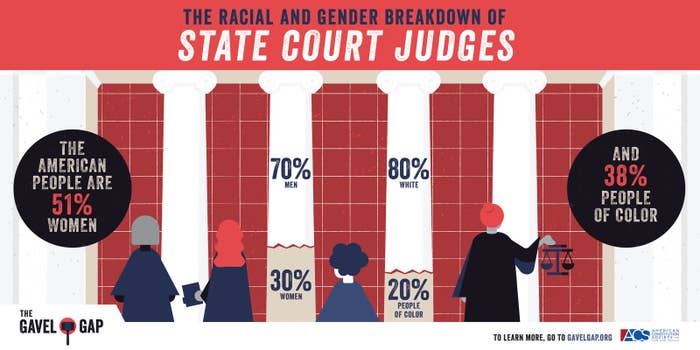
WASHINGTON — In 16 states, people of color account for fewer than one in ten state court judges, a groundbreaking report being released Wednesday details.
Despite women being more than 50% of the population, the report reveals that they represent only about 30% of the judges — a number that plays out across regions of the country.
"The Gavel Gap," a new report by Tracey George and Albert Yoon, is being released by the American Constitution Society on Wednesday. A copy was provided exclusively to BuzzFeed News in advance of the release.
"Our laws are premised in part on the idea that our courts will be staffed by judges who can understand the circumstances of the communities which they serve. Our judicial system depends on the general public’s faith in its legitimacy," George and Yoon write. "Both of these foundational principles require a bench that is representative of the people whom the courts serve."
That is not, however, what they found.

The report is the result of a joint research project collecting data on more than 10,000 judges serving on state supreme courts, state intermediate appellate courts, and state general jurisdiction trial courts. The data was collected and analyzed by researchers at Vanderbilt University and the University of Toronto, with support from the American Constitution Society, led by Vanderbilt's George and Toronto's Yoon.
The research was undertaken, George and Yoon write, because "[f]ew states release detailed biographical information about their judges," and "[e]xisting non-government sources generally rely on incomplete or unreliable information."
This dearth of information was the reality before this report, despite the fact that, they write, "[s]tate courts handle more than 90% of the judicial business in America."
While the report on state courts is coming out as the country awaits word from the U.S. Supreme Court on a handful of high-profile federal cases by the end of June, the authors note how few cases actually rise to that level. "The work of courts in America is the work of state courts," they note, adding that "approximately 94 million cases were brought in American state trial courts in 2013," according to the Court Statistics Project.
Unlike federal courts, where the president nominates and the Senate confirms judges, state court judges are selected by a variety of methods.
Selection Method By Court Level:
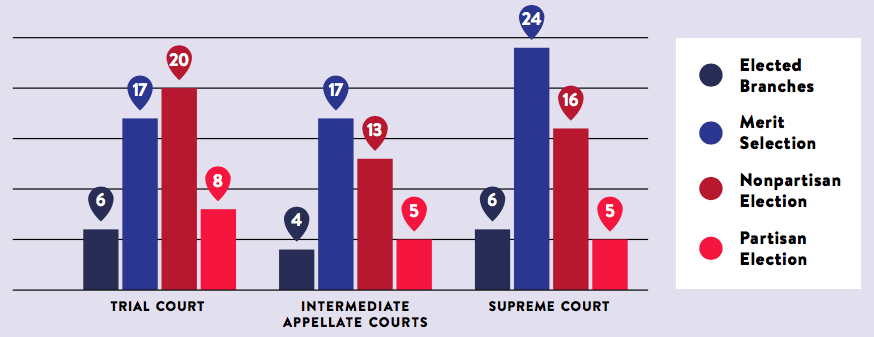
With those structural differences in mind, the researchers analyzed the data from those courts. (Appellate courts include both intermediate appeals courts, as well as state supreme courts.)
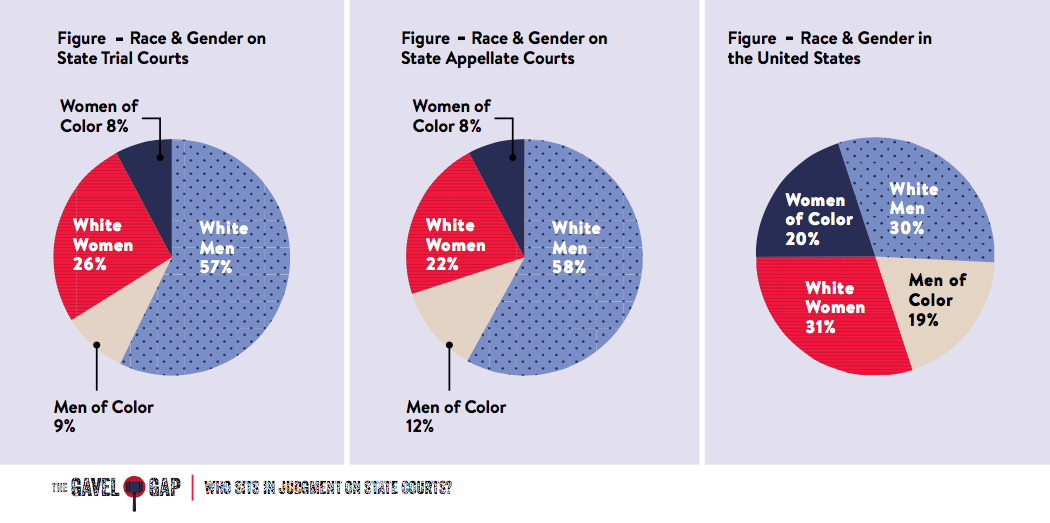
Within particular areas of the law, the numbers were even more striking.
Among state trial court judges, for example, the people who oversee the overwhelming majority of the criminal trials that take place in the country do not look at all like the people appearing before them.
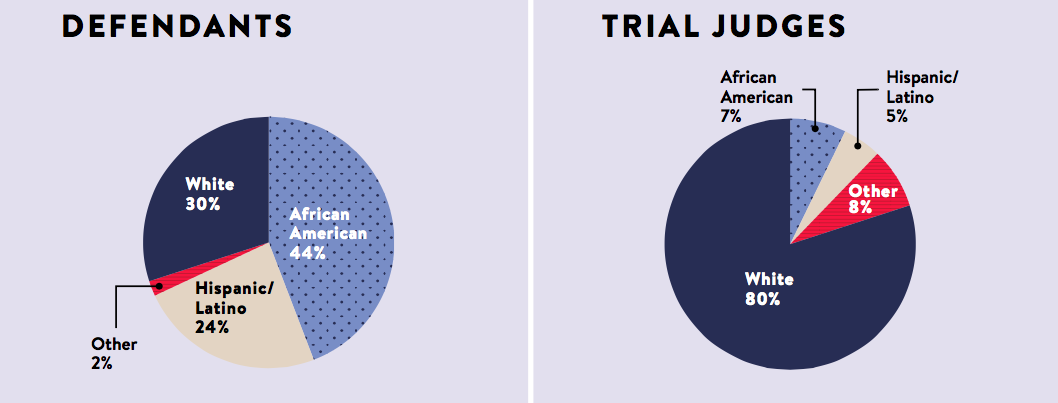
Another way that the report analyzed the makeup of the state-court judiciary was by examining the difference between the representation of women or minorities as judges and the representation of those groups in the state's overall population.
"A truly representative judiciary would have the same ratio of women and minorities on the bench as it does in the general population," George and Yoon write.
Under that benchmark, almost all states fall significantly short. For their purposes, the report grades the states. If they reach at least 90% parity, they get an "A." If they reach 80% to 89% parity, they get a "B"; 70% to 79%, they get a "C"; and 60% to 69%, they get a "D." States with below 60% parity get an "F."
No state was near parity when it came to women judges:
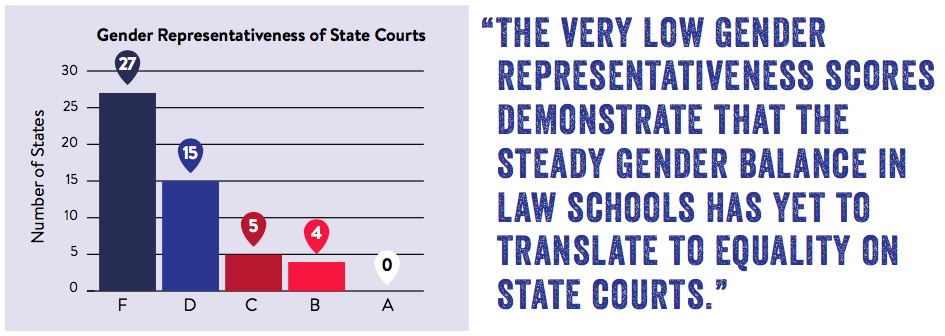
While some states approached racial parity, more states nonetheless received an "F" for being below 60% parity when it came to judges of color:
